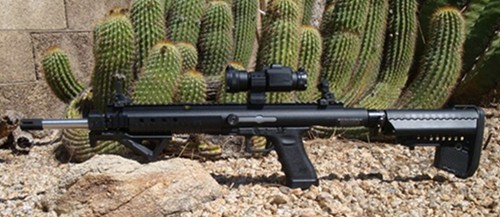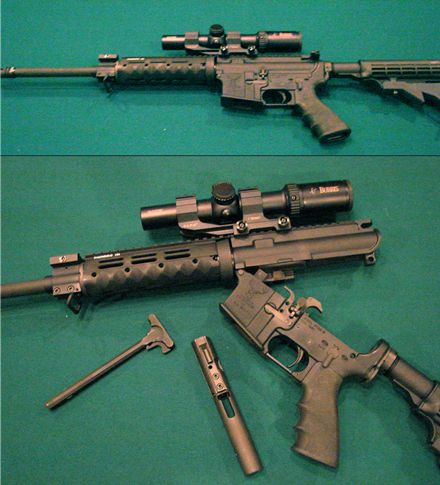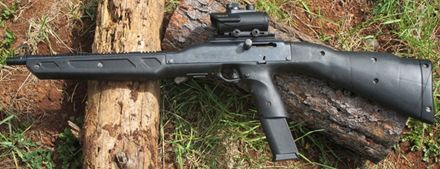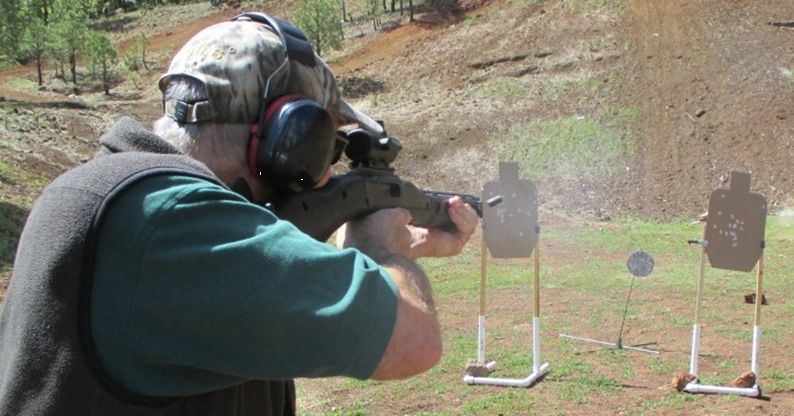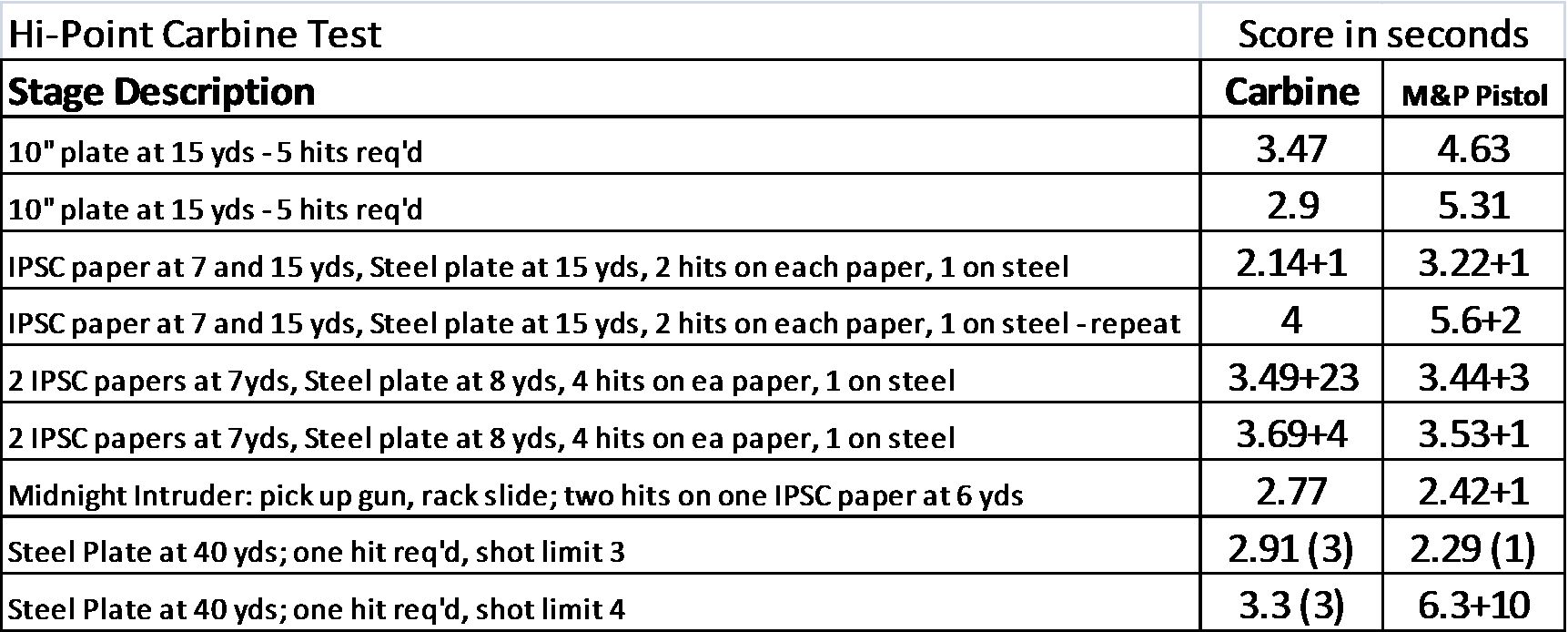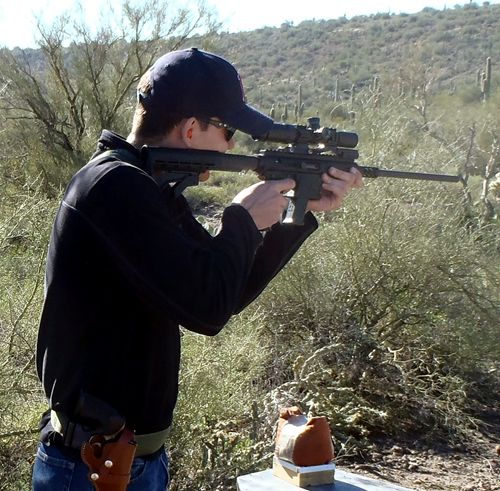
| Articles | Documents | Equipment | Events | Links | Membership | Miscellaneous | Scrapbook | Targets | What's New |
| Pistol Caliber Carbines | July 2015 | |||
| Dan Martinez | ||||
A couple of years ago, Bill Whitecotton started something. He had a Marlin 9mm Camp
Carbine that spent too much time in the closet, so he created a Pistol Caliber Carbine
(PCC) class at the Practical Pistol matches that he hosts for the club. At first,
there were only a couple of entries in the class at each match, since very few of us
had one. But over time, one by one, folks added PCCs to their armories in order to
compete. At the last Midweek Evening Practical Pistol Match, five shooters entered
the PCC class, the biggest field of carbine shooters we have had to date.
Most people can shoot a PCC better than a handgun. Since the way that Bill runs the
match, with PCCs shooting at the same stages that the pistols just ran, we can directly
compare the PCC times to the handgun times. The results usually prove better for
everyone with the PCCs.
For this month’s story, I asked several of the guys to give me a few words and a few
pictures of their PCCs. Maybe we can inspire more of our readers to consider begging,
bartering, borrowing, but hopefully not stealing one, to get an even more competitive
PCC class in upcoming shoots. So I will now turn the story over to the other guys,
but I’ll come back at the end to wrap things up.
| ||||
| MechTech CCU | Steve Werner | |||
|
Pistol Caliber Carbine (PCC) shooting has become the rage in the last couple of years. But they were routinely relied upon and used by cowboys and settlers during the 1800’s in the form of lever action rifles. Being able to have the same pistol caliber in their rifles as in their revolvers made life simpler and easier for them to use and transport around in their one horsepower “vehicles”. In today’s world we have many choices from the manufacturers of PCC’s. But if you own a Glock or 1911 type auto pistol, you already have ½ of the makings for your own PCC. For several years a company named MechTech has been producing a Carbine Conversion Unit (CCU) that will with the addition of a Glock or 1911 lower, complete a fully functional PCC. Their upper somewhat resembles that of an AR15 upper and includes an ATF legal 16” barrel. And because it is not the serialized portion of a firearm, it can be ordered and shipped right to your door. MechTech has a slew of accessories which can be added to their uppers making them AR like. You can go to their site at www.mechtecsys.com for a complete listing with prices. If you are an AR15 owner like myself then I am sure you have a box full of parts that you have removed when you upgraded to something that you liked better for your rifle. Many of your parts will be compatible with the MechTech upper. Some of you may be wondering if it is even legal to use your pistol to convert it into a rifle configuration and then back into a pistol again. In July 2011 there was a definitive ruling from BATF that when you assemble a pistol lower to the CCU upper you create a legal rifle and when you remove a pistol lower and reassemble the pistol you are not creating an SBR (Short Barreled Rifle). All assembling/ disassembling is totally legal from the view of the BATF. Google “atf-ruling-2011-4.pdf” for the complete ruling. A few of our Honeywell Sportsman Club members starting bringing PCC’s to some of our handgun shoots and they were incorporated into the match. At that time I did not have any type of PCC and became intrigued by them and the fun those that had them were having. So I set into researching available PCCs. Some were just not available because of their high demand and short supply while others were just too expensive for my taste.
| ||||
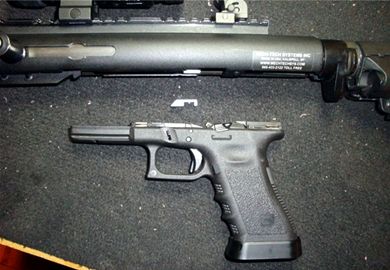
G34 lower and "Glock Block" separated from CCU
|
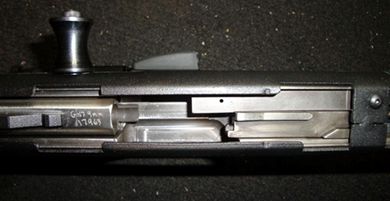 Underside of CCU |
|||
|
Then while researching one day I happened upon MechTech’s site and read up on them (they also have their own forum accessible from their site). Since what I read was mostly positive and I have several Glock pistols in various calibers, I decided to give the MechTech upper a try and ordered one. And boy was I glad I did. The quality of the MechTech is very good. No plastics or aluminum here. All steel which makes it somewhat heavier than what you get with AR uppers. Its built like a tank. But the heaviness has advantages I will mention in a moment. Mating the MechTech upper to my G34 lower was a piece of cake. The Glock uppers require a special feed ramp that installs in the lower and is held in place by a magnet. This feed ramp, or more commonly referred to as the Glock Block, is supplied with the upper when purchased. Once joined with the upper there is zero chance the added feed ramp will move. The beauty of a Glock lower is that you can use their magazines with capacities from 10 to 33 rounds in 9mm. First time shooting proved to be very accurate and reliable. Shooting at steel plates was a blast and that was with using open sights. I later added a Red Dot scope which makes it more of a blast. Double taps were very easy due to the weight allowing for hardly no recoil from the 9mm’s. There is no real field-stripping of the MechTech upper for cleaning. A thorough cleaning requires a full disassembly of the upper. MechTech recommends only doing this once or twice yearly depending on your amount of shooting. A quick clean of the upper would consist of removing the lower and lock back the bolt to the rear. Run patches thru the rifle bore until satisfied with the level of cleanliness. Clean around the bolt and lube it and barrel. Done. At our last shoot I experienced three Failures To Eject (FTEs) during the match. I have had the MechTech for 2 years and never did a complete tear down clean, only the quick cleans described above. After I did a complete tear down and clean I went back out and ran two 30 round magazines thru it without a hitch. My cleaning regime needless to say will change. The complete clean from tear down to reassembly took about an hour and a half. Not too terrible for only once or twice a year. Other club members who have shot my MechTech CCU have commented that they like the feel of how it shoots and its accuracy more than other dedicated PCC’s they have experienced. And if you want to avoid the swapping around of your lower from pistol to rifle during a match, do what I did. Buy a lower to keep it in a rifle dedicated configuration. I would recommend the MechTech to anyone who is serious about shooting Pistol Caliber Carbines. | ||||
| Stag Arms Model 9 | Dan Parks | |||
|
The AR was created from the ground up versus using a 9mm pistol lower and it accepts standard Colt style 9mm AR magazines that hold 30 rounds. The magazine inserts into the integrated magazine well in the lower receiver. The integrated magazine well won’t come loose nor have feeding issues accompanied with drop in magazine blocks. So far, I haven’t had any problems with bullets jamming during the shoots. The gun is made to shoot 200 yards but starts to lose accuracy after 100 yards. When shooting the rifle at the range, I use a high rest because of the long magazine making sure it doesn’t alter the shot.
| ||||
| Hi-Point Carbine | Gerhard Schroeder | |||
|
On first glance the thing looked ugly. On second, also cheap. Then it screamed “weak, plastic, mass-produced in China”. Am I done now? No. Place it in the sun, OK, the Arizona sun for awhile, and the plastic begins to feel softer; and that trigger sucks big time. Done now? No. Its owner, my friend Ron, had warned me, had the same opinion. He let me borrow it for just this little evaluation.
Done? Maybe.
My experience with any Hi-Point gun is limited to five shots, many years ago, from a pistol in 45ACP. Tony ‘Tag’ had brought that bulky bloated looking ‘gun’ out to the desert. But guess what – all five shots hit the rock I aimed for. This carbine also comes with a little story. Ron had found it on a yard sale table, got it for even cheaper than it looks. He soon found out why. Once out with it in the desert somewhere, magazine loaded, action racked, first pull of the trigger did indeed send a bullet. Then it fell silent on subsequent trigger pulls. Repeat - same result. The diagnosis: In this design the firing pin also acts as ejector of the fired brass, so it is protruding through the bolt face noticeably further than on other guns when its slide is pulled all the way back. Said firing pin was bent, thus interfering with the bolt traveling all the way back. He carefully straightened that firing pin, and no further failures to fire had occurred. No telling how that firing pin got bent.
OK, enough with the awkward introduction. To the firing line we go. I had promised Ron to only feed his PCC with factory ammo. That translates into “cheapest kind you’ve got” at the WalMart counter, which ended up being a box of Tula 115 grain FMJs. The firing line ended up being in the cool pines. To make things more interesting I asked buddy Gary to ‘compete’ against me with his 9mm pistol, a Smith & Wesson M&P. First order of business was some sort of accuracy (and with that functional) test. Magazines stuffed with 16 rounds, inserted, racked the bolt, and the first one would not chamber. In fact, I had trouble removing ammo from the mag. Long story short, with more than 11 rounds in its magazine this HiPoint Carbine would not chamber. After sorting all that out I eventually did get to shoot. Nothing fancy here. Slow fire, but standing offhand from 25 steps away, 5 shots went into 2.8”. Clearly, the trigger had much to do with it. No doubt off bags this gun would shoot better. But I knew where point of impact was – slightly high. Also, this little beast kicked! Nothing that would jeopardize the fillings in my teeth. It was more than expected though, sharp and brief. I forgot to mention earlier that this gun is fairly light. Then we ran a couple of “stages”. See table below:
Bottom Line: When loaded to no more than 11, there were no failures to feed, fire, eject, cycle. It ate that box of Tulas, plus about 10 of the S&Bs, also 115 FMJs. I did encounter one malfunction. With ammo in the magazine it takes more force to seat it. I “solved” that problem by smacking its bottom. Well, near the end of our little session, upon hitting the magazine bottom yet again, the floor plate came off. Took us a few minutes to repair. Turns out that applying pressure gently also seats the magazine properly. So I did that, and we kept shooting. Note: once I was back home I loaded that magazine full with reloads, all assembled with Winchester brass. I did not fire them, but those did cycle through the gun manually. If you look at the scores, the carbine clearly had the advantage when distances were longer. No surprise here. At least for me the trigger was a noticeable handicap when trying to shoot fast, as in 4 hits on paper from 7 yards. I tried to compensate while transitioning to the next target, and missed twice. And then, with only eleven in the magazine, she ran dry before I could hit the plate. Ron told me that his son had the opportunity to shoot a new-production HiPoint Carbine, also in 9mm. That gun functioned flawlessly, and did stay open on an empty magazine. So HiPoint has been adding upgrades. But he said that this older model ‘feels’ better. I believe him.
| ||||
| TNW Aero Survival Rifle | Dan Martinez | |||
|
The Aero Survival Rifle, or ASR, is made by a small company in a small Oregon town named Vernonia. The company, TNW, got their start by making semi-auto conversions of machine guns like the German MG34, and the venerable “Ma Deuce”, the Browning M2. They also made semi-auto conversions of the Finnish Suomi M31 sub-machine gun. They eventually decided to design and tool up a homegrown pistol caliber carbine, the Aero Survival Rifle. They now make a pistol version of the gun as well. The ASR and ASP are available .45 ACP, 9mm, and .40 S&W calibers. My ASR is a 9mm. The ASR has a tubular aluminum machined upper receiver that, like most pistol caliber carbines, uses a heavy steel bolt in a direct blowback method of operation. The lower receiver is attached to the tubular upper by a couple of notched pegs that hang down into the lower from the upper. The upper is then secured to the lower by cross pins through the lower. Glock mags are used. The barrel screws into the upper receiver using a long barrel nut with holes in it that makes it look like an out-of-place muzzle brake. This method of barrel attachment allows easy take-down of the gun. When the AR-style collapsing buttstock is collapsed and the barrel is removed, the gun easily packs into a backpack for travel. In my September 2013 story, I showed a picture of it taken down, next to a broken down AR-7, a much better known survival rifle. They are about the same size, but the ASR packs a considerably stronger punch firing 9mm compared to the .22 LR of the AR-7. But, the ASR is a lot heavier. Back in that story, I reported lots of problems with jamming. Way too many times, ejected cases failed to clear the area of the ejection port before the bolt started coming forward to chamber the next round. I talked about trying lots of different factory ammo, and various recipes of handloads, never curing the problem. I concluded the story thusly: “So in summary, it is a cool new gun that just may not quite be ready for prime time.” After a frustrating debacle at one of Bill’s shoots, I put the ASR away up on a shelf and didn’t play with it again for almost a year. On Christmas break 2014, Sam was home on leave. He knows how to run our Sony video camera in high frame rate mode. We had diagnosed the problem with the club’s first electric clay thrower by filming it in this mode, then playing back the video in slow motion. So we tried that with the TNW ASR. Strangely, the gun behaved much better that day, than it did at the last competition. Video results were inconclusive. Some months later, I took it out to play again one morning at Table Mesa. Steve and Gerhard just happened to already be there with a number of targets set up. I asked for permission to bang away at some of the steel plates that they had set out. First I fine-tuned my zero by watching the lead splats on an 8” plate they had set up at around 40 yards. Then I popped in a fresh 15 round magazine and let loose on another target that they had set out at about 100 yards. Standing offhand, I emptied the magazine successfully, monotonously ringing the plate on almost every shot. Gerhard asked, “What did you do to make it purr now?” I had to shrug my shoulders and answer, “Nothing.” Eventually, I came to realize that it just did not like the 33 round Glock magazines that I had bought for it. It came with one 15 round KCC magazine (Korean Glock clone). It very occasionally hiccups on that mag, but overall it is pretty reliable. At the last Midweek Evening Practical Pistol Match, I used only that mag for most of the match. In one stage, Bill declared a mandatory mag change, so I had to use one of the 33 rounders. Wouldn’t you know, I immediately got a jam that I had to clear. But for the rest of the match, I had no problems. I ended up finishing last in pistol, but first in the PCC class that evening. I sold the 33 round mags to Bill, and used the proceeds to cautiously buy one new 17 round genuine Glock mag. I just got done testing it, putting close to 75 rounds through it, with no hint of a problem. I hope that my jamming problem is now solved.
Pistol Caliber Carbines are a lot of fun to shoot, and in these days of limited availability of .22 LR ammo, it seems that “9mm is the new .22”. If you don’t yet have one, maybe this little roundup of different options will get your gears turning. © Honeywell Sportsman Club. All rights reserved. | ||||
The Honeywell Sportsman Club is a small group of shooting and outdoor enthusiasts in the
Phoenix, Arizona area. Our website is ad-free and completely free to use for everyone.
But we do have expenses that we need to cover, such as the web hosting fee and our liability
insurance. If you enjoyed visiting our website, found it useful in some way, or if you enjoyed
reading this story, please consider tipping us through our PayPal donation jar below. Thanks for visiting, and come back soon.
![]()
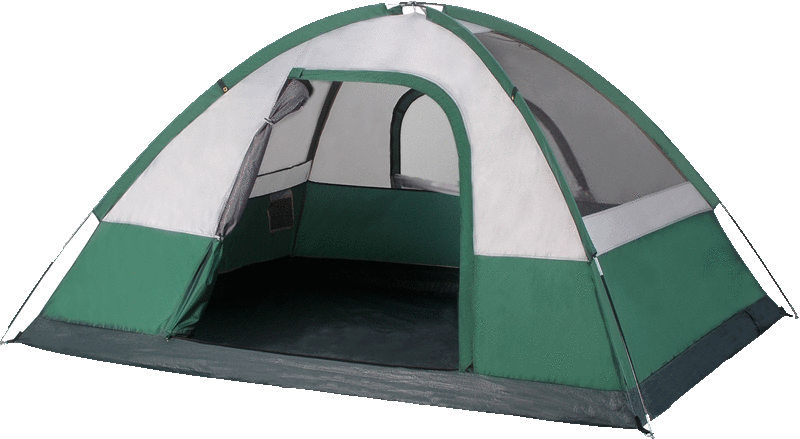
Articles
Docs
Eqpt
Events
Join
Links
Misc
New
Pix
Targets
